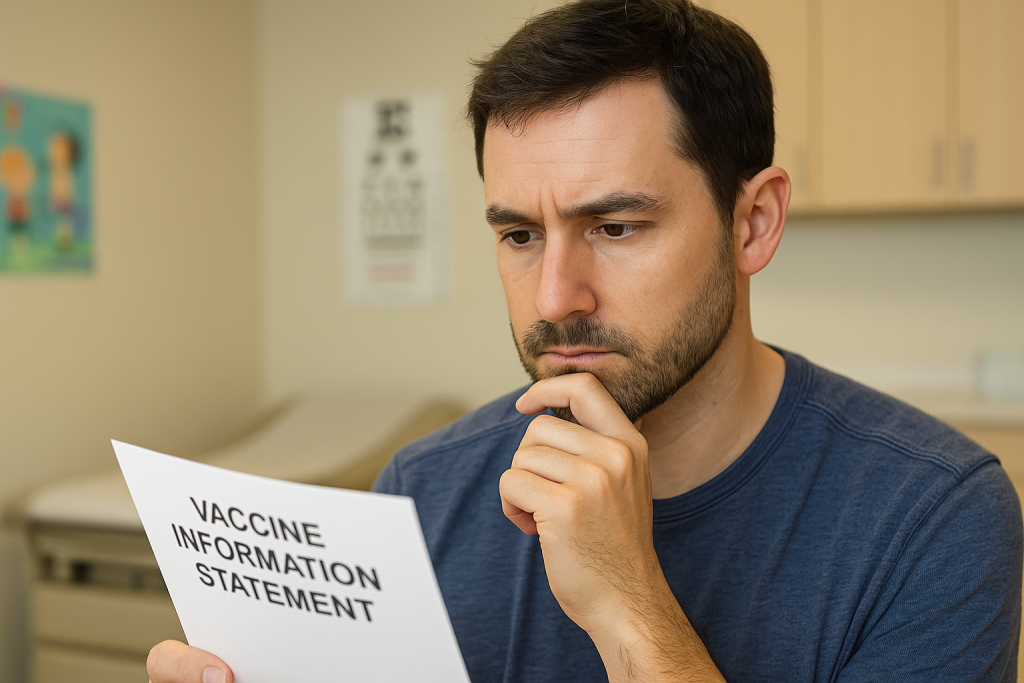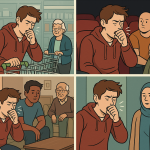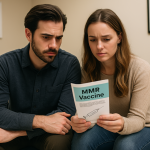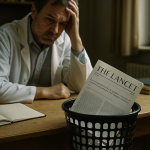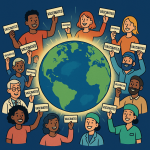Part 2 of 3: Why expected value matters when weighing vaccine decisions
About this Series
This article is part of a series designed to help readers think clearly and calmly about vaccines. In an age of misinformation and overwhelming noise, we aim to cut through the confusion with evidence, reason, and empathy. Whether you’re vaccine-hesitant, curious, or just want to make informed choices for your family, this series is here to offer clarity—grounded in science, not fear.
- Part I – You’re Asking the Wrong Question
- Part II – Not All Risks are Equal
- Part III – You’re Not Alone in This Fight
💉 A Fever Isn’t the Same as a Funeral
In Part 1, we explored a common mistake people make when thinking about vaccines: comparing the chance of catching a disease and the chance of a vaccine side effect as if they’re two separate, unrelated events.
We reframed the question:
“How much more or less likely is it that something bad will happen if I get the vaccine?”
That’s a better question—but there’s still one more step.
Because not all “bad things” are equally bad.
A sore arm isn’t the same as brain inflammation. A fever isn’t the same as a funeral. To make good decisions, we need to consider both how likely something is and how severe it would be if it happened.
🧠 The Real Math of Risk: Expected Harm
Imagine you’re deciding whether to walk through a storm to your car. One path has a 20% chance of a light drizzle. Another has a 5% chance of a lightning strike.
You wouldn’t just compare the numbers—you’d think about what those numbers mean.
That’s the essence of expected harm:
![]()
It’s not just how likely something is to happen, but how bad it would be if it did.
This kind of calculation is how insurance companies set rates, how engineers design safety systems, and how public health experts make vaccine recommendations.
⚖️ How Do You Measure “How Bad”?
Severity can be tough to quantify. What’s worse: a seizure that lasts 60 seconds, or two weeks of pneumonia?
To make comparisons across diseases and populations, public health experts often use a practical proxy:
Risk of death.
It’s not a perfect measure, and it doesn’t capture disability, suffering, or long-term health problems—but it gives us a simple, conservative benchmark. And it tilts the scales in favor of underestimating disease harm, not exaggerating it.
🧪 Revisiting Measles (Now with Severity in the Equation)
In Part 1, we compared the chances of getting measles versus the chances of a vaccine side effect. Let’s now weight those risks by how severe they are—using the risk of death as a stand-in.
▶️ Without the Vaccine:
- In an outbreak, an unvaccinated person has up to a 90% chance of infection
- The risk of death from measles in developed countries varies:
- Some sources report ~1 in 10,000
- During outbreaks or in under-vaccinated populations, it’s higher—up to 1–3 in 1,000
Let’s be conservative and use 1 in 3,000:
![]()
▶️ With the Vaccine:
- Serious adverse events from the MMR vaccine are extremely rare
- There have been no confirmed deaths in healthy individuals due to the MMR vaccine
- To remain conservative and include any possible risk, we’ll estimate:
![]()
💡 Result:
Even using conservative numbers, you’re about 300× safer from death with the vaccine.
⏳ Over Time, Risk Adds Up
Risk isn’t static. If you skip the MMR vaccine, you’re not avoiding risk—you’re prolonging your exposure to it.
Let’s say you encounter three measles outbreaks over the next decade. Your cumulative chance of infection becomes nearly certain: 1 – (1 – 0.9)^3 ≈ 0.999 \text{ or 99.9%}
![]()
Your 10-year expected risk of death without the vaccine becomes:
![]()
The vaccine’s risk? Still the same:
![]()
🔁 Final result:
Over a decade, you’re over 300× safer from death if you vaccinate—even conservatively.
😷 But What If I Get Sick Anyway?
It’s true: no vaccine is 100% effective. The MMR vaccine is about 97% effective against measles, which means a 3% breakthrough risk during an outbreak.
Let’s add that into our expected harm calculation.
![]()
Add it to the already tiny vaccine reaction risk:
![]()
Compared to the unvaccinated 0.033%:
💡 Even if you get unlucky and catch measles despite vaccination, you’re still ~30× safer from death than if you skipped the shot.
And this doesn’t even account for all the other harms measles can cause—like brain inflammation (1 in 1,000), hospitalization, or long-term disability.
🧠 Why Our Intuition Gets This Wrong
You might be thinking, “Okay, but both numbers are small.” That’s where our brains can get in the way.
We tend to focus on what’s vivid, not what’s likely. Vaccine side effects get attention. Disease risks often don’t.
🔹 Availability Bias
We remember scary stories more easily than boring statistics—even if those stories are one in a million.
🔹 Omission Bias
Doing nothing feels safer than doing something—even if it’s not. We blame ourselves more for taking action than for standing still.
🔹 False Precision Bias
Saying “1 in 3,000” and “1 in 1,000,000” makes them sound like the same kind of number. They’re not. One is 333× larger.
✅ What Rational, Caring Decisions Look Like
Vaccination isn’t about pretending there’s no risk. It’s about choosing the smallest possible one.
It’s not just about you or your child. It’s about the newborn at your playgroup. The cancer patient at your church. The teacher on chemo who can’t mount an immune response.
Vaccines aren’t perfect. But the risks of skipping them are larger, more frequent, and far more severe.
👉 Coming Up Next: You’re Not Alone in This Fight
So far, we’ve focused on your risk—how vaccines reduce the chance of getting seriously sick. But what if the most important reason to vaccinate has nothing to do with you at all?
In Part 3, we’ll explore how your decision affects the people around you.
We’ll show how viruses spread like wildfires—and why even healthy people play a critical role in protecting those who can’t protect themselves.
What if getting vaccinated is how you become someone else’s firewall?
Stay tuned.
🧠 Final Thought
The vaccine debate gets framed like a contest between “sides”—believers vs. skeptics.
But really, it’s about understanding risk in the same way we understand car safety, storm preparation, or food recalls. It’s about seeing the whole picture, not just the headlines.
When someone asks, “Aren’t you worried about the side effects?”
You can honestly say,
“I looked at the numbers—and the vaccine is by far the safer choice.”
References
- CDC. Measles Vaccination. https://www.cdc.gov/measles/vaccination.html
- WHO. Measles Fact Sheet. https://www.who.int/news-room/fact-sheets/detail/measles
- Institute for Vaccine Safety. MMR Vaccine Profile. https://www.vaccinesafety.edu/measles-vaccine.htm
Last Updated on July 7, 2025

